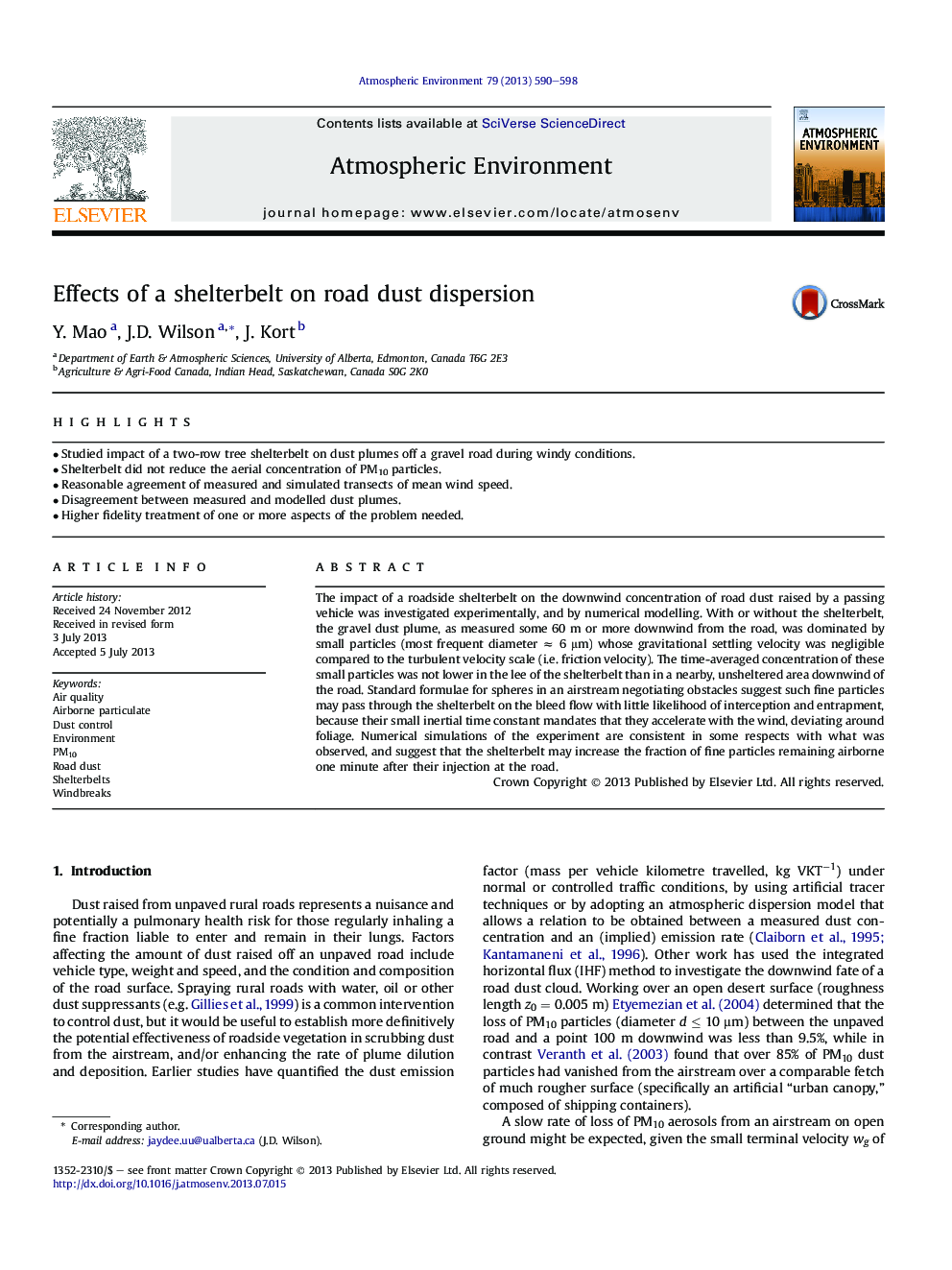| Article ID | Journal | Published Year | Pages | File Type |
|---|---|---|---|---|
| 6341535 | Atmospheric Environment | 2013 | 9 Pages |
Abstract
The impact of a roadside shelterbelt on the downwind concentration of road dust raised by a passing vehicle was investigated experimentally, and by numerical modelling. With or without the shelterbelt, the gravel dust plume, as measured some 60 m or more downwind from the road, was dominated by small particles (most frequent diameter â 6 μm) whose gravitational settling velocity was negligible compared to the turbulent velocity scale (i.e. friction velocity). The time-averaged concentration of these small particles was not lower in the lee of the shelterbelt than in a nearby, unsheltered area downwind of the road. Standard formulae for spheres in an airstream negotiating obstacles suggest such fine particles may pass through the shelterbelt on the bleed flow with little likelihood of interception and entrapment, because their small inertial time constant mandates that they accelerate with the wind, deviating around foliage. Numerical simulations of the experiment are consistent in some respects with what was observed, and suggest that the shelterbelt may increase the fraction of fine particles remaining airborne one minute after their injection at the road.
Related Topics
Physical Sciences and Engineering
Earth and Planetary Sciences
Atmospheric Science
Authors
Y. Mao, J.D. Wilson, J. Kort,
